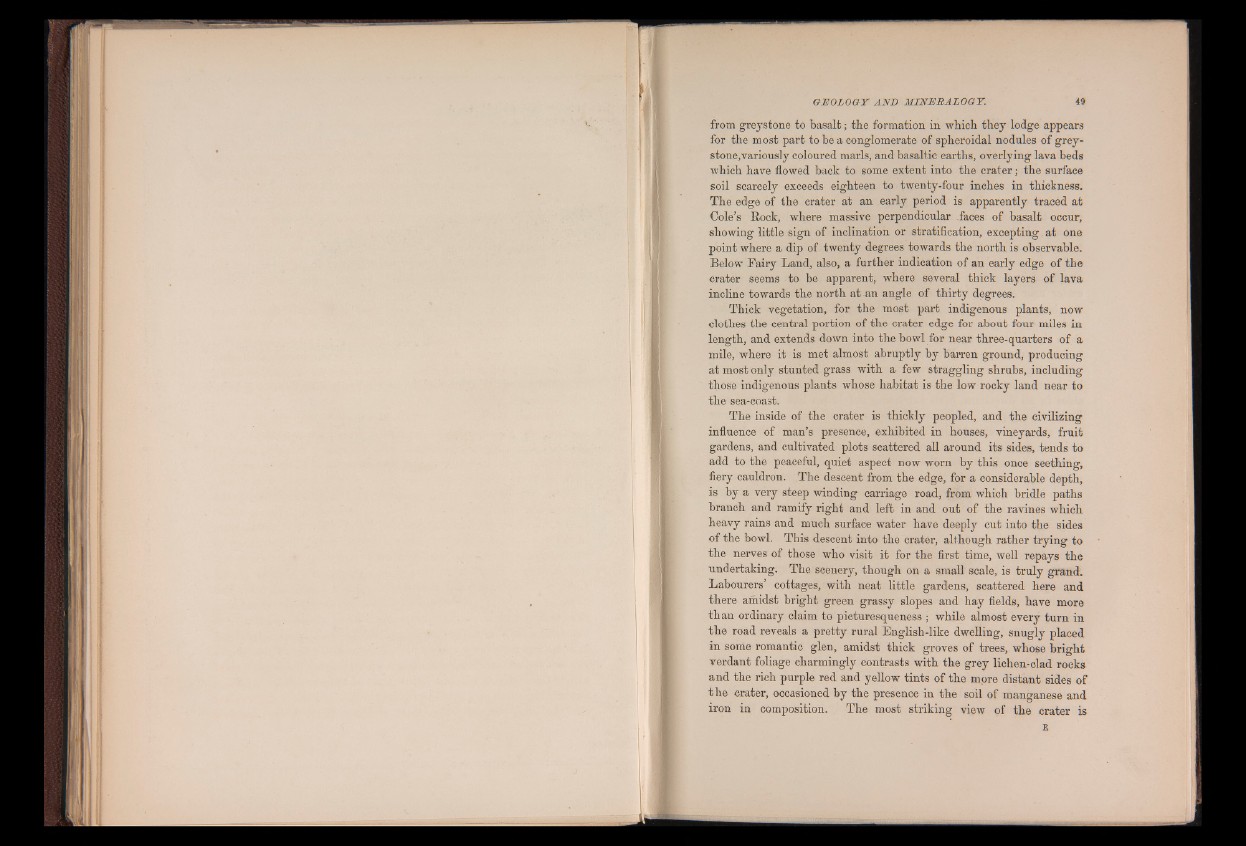
from greystone to basalt; the formation in which they lodge appears
for the most part to be a conglomerate of spheroidal nodules of grey-
stone,variously coloured marls, and basaltic earths, overlying lava beds
which have flowed back to some extent into the crater; the surface
soil scarcely exceeds eighteen to twenty-four inches in thickness.
The edge of the crater at an early period is apparently traced at
Cole’s Bock, where massive perpendicular faces of basalt occur,
showing little sign of inclination or stratification, excepting at one
point where a dip of twenty degrees towards the north is observable.
Below Fairy Land, also, a further indication of an early edge of the
crater seems to be apparent, where several thick layers of lava
incline towards the north at an angle of thirty degrees.
Thick vegetation, for the most part indigenous plants, now
clothes the central portion of the crater edge for about four miles in
length, and extends down into the bowl for near three-quarters of a
mile, where it is met almost abruptly by barren ground, producing
at most only stunted grass with a few straggling shrubs, including
those indigenous plants whose habitat is the low rocky land near to
the sea-coast.
The inside of the crater is thickly peopled, and the civilizing
influence of man’s presence, exhibited in houses, vineyards, fruit
gardens, and cultivated plots scattered ail around its sides, tends to
add to the peaceful, quiet aspect now worn by this once seething,
fiery cauldron. The descent from the edge, for a considerable depth,
is by a very steep winding carriage road., from which bridle paths
branch and ramify right and left in and out of the ravines which
heavy rains and much surface water have deeply cut into the sides
of the bowl. This descent into the crater, although rather trying to
the nerves of those who visit it for the first time, well repays the
undertaking. The scenery, though on a small scale, is truly grand.
Labourers’ cottages, with neat little gardens, scattered here and
there amidst bright green grassy slopes and hay fields, have more
than ordinary claim to pieturesqueness ; while almost every turn in
the road reveals a pretty rural English-like dwelling, snugly placed
in some romantic glen, amidst thick groves of trees, whose bright
verdant foliage charmingly contrasts with the grey lichen-clad rocks
and the rich purple red and yellow tints of the more distant sides of
th e crater, occasioned by the presence in the soil of manganese and
iron in composition. The most striking view of the crater is